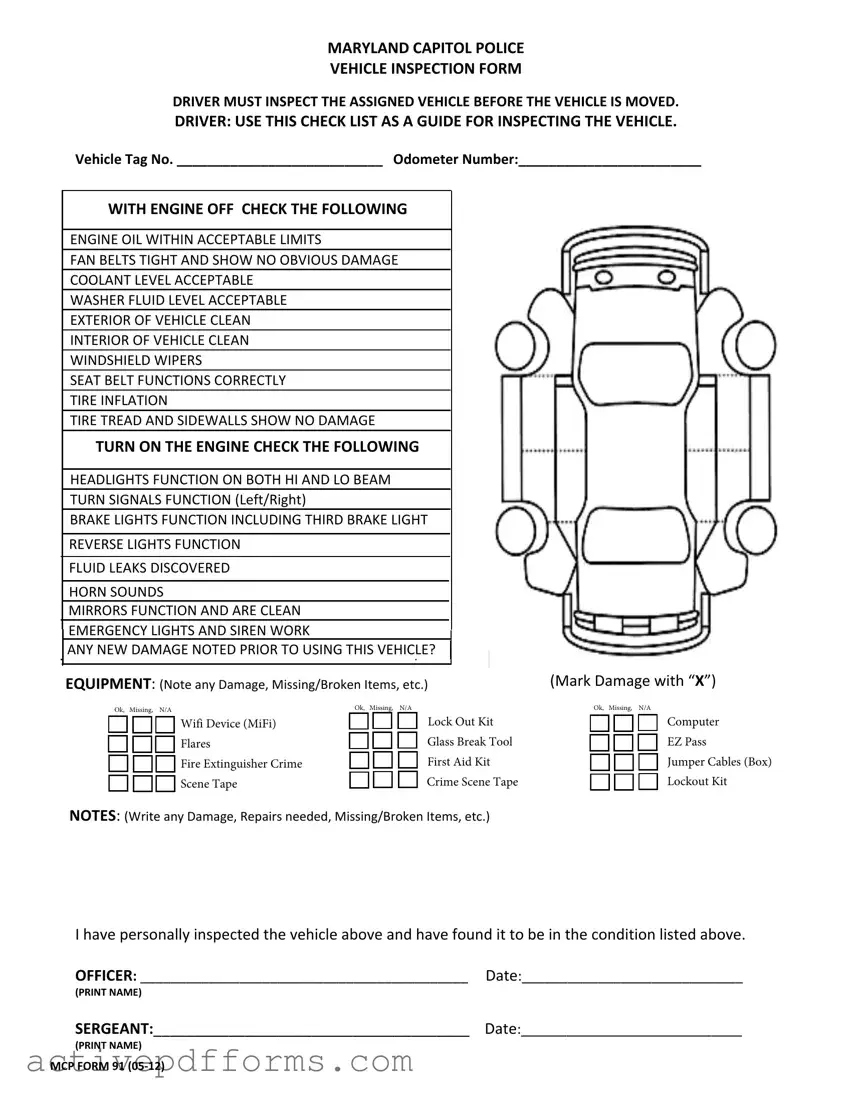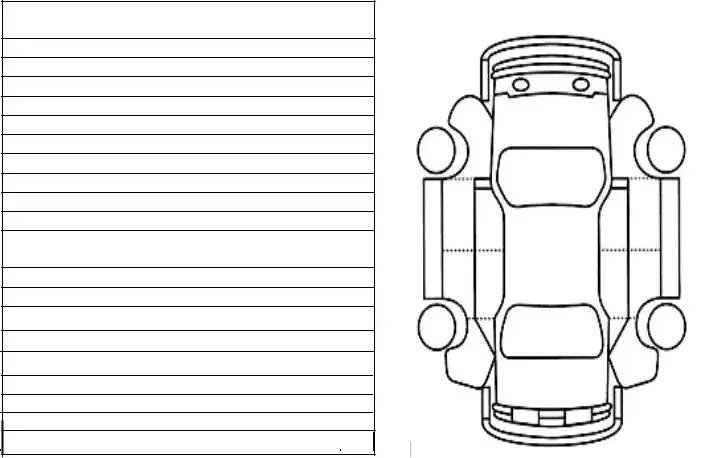What is the purpose of the Maryland Capitol Police Vehicle Inspection Form?
The Maryland Capitol Police Vehicle Inspection Form serves a critical role in ensuring the safety and operational readiness of police vehicles before they are deployed. It guides officers through a comprehensive pre-use inspection, focusing on both mechanical and safety aspects of the vehicle. This process ensures that vehicles are in optimal condition to respond to emergencies, enforce laws, and protect the public. Each checkpoint on the form, ranging from engine oil levels to the functionality of emergency lights and sirens, is designed to identify issues that could compromise vehicle performance or officer safety. By meticulously completing this checklist, officers contribute to a culture of responsibility and maintenance that is vital for the effectiveness and reliability of law enforcement operations.
Is it mandatory for officers to complete this checklist before using the vehicle?
Yes, it is mandatory for officers to complete this checklist before the vehicle is moved. This mandate ensures that all vehicles are inspected systematically to identify any operational or safety concerns that could impact the officer’s ability to perform their duties or the safety of the public. The checklist serves as both a preventative measure against vehicular malfunctions on duty and a documentation tool for maintenance needs. Compliance with this process is crucial for maintaining the fleet's integrity and operational readiness.
What should be done if damage or a mechanical issue is found during the inspection?
If damage or a mechanical issue is discovered during the inspection, the officer conducting the inspection is required to note the specific problem in the "NOTES" section of the form, indicating whether the item is missing, broken, or not applicable (N/A). Additionally, marking damage with an “X” helps to visually highlight issues for maintenance teams. If the vehicle is deemed unsafe or not operationally ready, it should not be used until the issue is addressed and rectified. The officer should report the concern to their supervisor or the fleet management department so that appropriate repairs can be scheduled promptly, ensuring the vehicle is quickly returned to service in a safe and functional condition.
How does the checklist address the inspection of emergency equipment in the vehicle?
The checklist includes a specific section dedicated to the inspection of emergency equipment within the vehicle. This section requires officers to assess the condition and presence of essential items such as Wifi devices (MiFi), lockout kits, flares, glass break tools, fire extinguishers, first aid kits, and crime scene tape. Each item must be evaluated to determine if it is okay, missing, or not applicable (N/A). This thorough assessment ensures that officers have the necessary tools and equipment at their disposal to respond effectively to a wide range of emergency situations.
Who needs to sign off on the completed vehicle inspection form?
The completed vehicle inspection form requires the signatures of two individuals: the inspecting officer and their sergeant. The inspecting officer must print their name and sign the form, affirming that they have personally inspected the vehicle and found it to be in the condition listed on the form. Following this, the officer's sergeant also reviews the completed checklist and signs off on it, providing an additional layer of oversight. This process ensures accountability and that all vehicles are inspected thoroughly, maintaining a high standard of safety and readiness within the fleet.

